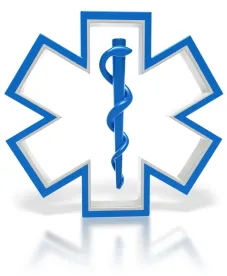The 2019 JP Morgan Healthcare Conference did not see multiple blockbuster announcements like in some earlier years but instead showcased an industry hard at work calmly and meaningfully trying to address and innovate to solve the industry’s structural, systemic and demographic challenges. We saw some companies trying to respond to the current fragmentation of healthcare delivery and financing through expansion of their vertical continuum, while others continued to strive to use technological solutions to shift behaviors and close gaps. There frankly was little question that the industry is continuing to move toward value-based and risk-based reimbursement – the challenge now is building or buying the necessary infrastructure, educating stakeholders and obtaining commitment and engagement, and structuring appropriate partnerships and relationships with other industry participants. We expect the pace of acquisitions and alliances to continue at current or higher levels as the industry repositions for this reimbursement shift. Similarly, the industry appears ready to innovate with artificial intelligence and machine learning, as incumbent technology providers develop new products and strategy and disruption is expected from new market entrants.
There also was no panic nor concerns voiced in the presentations we attended about the Affordable Care Act or the other possible results of the current political situation. Rather, several presenters noted that the exchange population relatively is minimal in size as compared to the commercial and Medicare/Medicaid markets. With exchange enrollment holding relatively steady and many plans reaching profitability with their exchange products, plans and providers are looking instead to the coming massive transformation of the commercial and federal products markets as risk further proliferates.
Hospitals – In listening to multiple hospital and health system presentations, certain themes became clear. In the past year, hospital performance has held steady or improved among the presenting systems. Days cash on hand numbers generally remained strong, margins have been adequate (if not always exciting) and volumes slightly grew, although not in large increments for most systems. Health systems also are focused on physician alignment and better integrating the physician resources they already have. We saw a continuation of hospital acquisitions and alliances, with continuing interest in further consolidation. Unless there is an external effect, we expect 2019 should continue the prior year’s level of hospital merger and acquisition activity, although perhaps with fewer mega-merger transactions.
Tenet’s CEO also highlighted that approximately 60% of ambulatory surgery centers (ASCs) are still independent and anticipated more ASC acquisitions occurring. Considering that ASCs are competitors to hospital operating rooms, often offer lower pricing and better turnaround times (TAT) for surgeons, and allow for financial and clinical engagement with community physicians, we could see certain hospitals targeting local ASCs as expansion vehicles through acquisition or buying ASCs near competitor hospitals to try to divert margin-producing surgery from competitors’ operating rooms. While many hospitals instead have opted to partner with ASC operating companies (such as USPI), there can be strategic and tactical benefits (at least in the short term) in a controlled ASC initiative. Finally, with the likely regrowth of bundled payment programs, ASCs can provide a cost-effective solution for convenors and protect margin for hospital operating rooms in non-bundled surgeries. Keep in mind, however, that payors may not like to see more hospital controlled ASCs for obvious reasons. The 2017 purchase of Surgical Care Affiliates by United’s Optum provides the possibility of non-hospital ambulatory care networks utilizing SCA’s ASCs, MedExpress’s urgent care centers and Optum’s physician groups. Will we see further acquisitions of ASC companies by payor controlled entities in 2019 in counter to health system trends and initiatives?
Another trend noted at the conference multiple times was the growth of hospital services being provided at home. Intermountain’s Mark Harrison talked about their use of the “virtual hospital” to serve a geographic footprint the size of Italy with a thin population density and shared that now 40 services were being delivered through their virtual hospital model. We also have seen use of a hospital at home model in dense population areas, such as New York City. For hospitals that have full bed utilization (such as tertiary or quaternary academic medical centers), virtual hospital services can offer the opportunity potentially for further revenue and ADC expansion without the full per bed infrastructure build cost of the current physical facilities, especially for less complex admissions. We will be looking for more discussion of this trend at next year’s conference.
Patient Engagement – Perhaps the greatest missed opportunity of the conference was the chance before the conference started to set up a drinking game or turkey bingo card that resulted in a drink or a win every time someone said “patient engagement.” Definitely one of the buzz phrases this year, as in “we have to have better/more/some/any patient engagement” in order to achieve [fill in the blank with: population health management/cost reduction/appropriate utilization/patient compliance/etc.]. And, yes, there’s an app for that. Everyone seems to have an app for patient engagement. It would be interesting to see how much utilization those apps get after they’ve been in place for a year.
While part of the solution, the apps are frankly just another manifestation of the Field of Dreams problem and the curation problem. The Field of Dreams problem of course is “if you build it, they will come” (you’ve seen the great baseball movie, right, and if not, see it this weekend on Netflix). Too much of healthcare today is Field of Dreams – build this app/facility/program/etc. and then wait and hope for the patients to notice it, engage and show up. The curation problem, as noted in one of our earlier blog posts, refers to the fact that healthcare has a lot of front doors for patients and a lot of choice, causing uncertainty and confusion among patients and consumers. So, a patient engagement app if not structured primarily for intelligent navigation and decision trees in access choices will add to and not decrease the curation problem with patient engagement. That said, we have to start somewhere and then iterate and improve from there. I’m just looking forward to the next two or three releases from now, because v.1 likely is not going to achieve the desired results. Color me pessimistic short-term and hopeful long-term.
Livongo CEO Zane Burke put it well when he said at the conference that we need to know the customer the way Amazon does. Think about that for a moment – have we as a healthcare industry started to collect and apply patient preferences? For example, Mr. Smith likes to learn about his healthcare choices in a certain way, he is very busy and therefore wants to get in and out quickly (or he’s living alone and sees his healthcare interactions as social and a way to decrease loneliness, so he would like more interaction with his caregivers and not less), or he really is willing to spend more money on certain health issues (but not others) to make sure he is getting the best possible care. Can we design a personalized care experience that is informed by and meets personal preferences? And if we can, then why wouldn’t we do that if the result is strong branding, retention and loyalty? Do we collect and utilize data in the healthcare industry at the same level of sophistication and use as do the social media companies, or the banks, or the casinos? If not, perhaps we should think more about this opportunity. Should healthcare companies be buying data about their patients from social media and search companies to really put their patient engagement programs on steroids? Knowing your customer and their preferences is one of the first steps in making sure that you can provide a satisfactory customer experience.
Behavioral Health – One of the most difficult issues in healthcare today is behavioral health. The industry clearly has acknowledged that and is looking for solutions, as behavioral health is complex, highly personal and high cost/ high stakes. We were heartened to hear several presenters talk about programs and marketing to reduce stigma associated with mental health issues. Kaiser announced that it is launching a campaign to combat stigma. Beacon Health Options, one of the larger behavioral health focused companies, also is working to decrease the stigma of mental health illness and disclosed that they are piloting in a Texas Walmart store behavioral health clinicians to allow customers and employees to receive behavioral health treatment in the same in-store clinics where primary care services are provided. One Medical’s presentation also noted their desire to integrate mental health treatment and diagnosis into their primary care clinics. Similarly, Hartford HealthCare’s presentation specifically highlighted that they have built the largest behavioral health network in Connecticut and have now co-located behavioral health in 14 location to date. Generally, we will be interested to hear reports at subsequent JP Morgan conferences as to the success of these multiple behavioral health initiatives.
Beacon also noted the increasing prevalence of behavioral health issues in the United States, such as suicide, depression, anxiety and substance abuse (opioids), which, although good for behavioral health providers, is very concerning from a systemic perspective. Looking at that list, it prompted us to note that many of the largest behavioral health companies in the United States are really behavioral health conglomerates, with a broad range of programs aimed at very different populations – substance abuse, autism, serious mental health illness (psychosis, schizophrenia), inpatient facilities, residential facilities, etc. Looking at Beacon or Acadia Healthcare, these are very broad companies, and it certainly highlights the absence from the behavioral health market today of the tightly focused companies that we are seeing in other sectors, like for example Livongo Health, Inc. or Virta Health Corp. for diabetes. Is there a place in the market for a company that focuses primarily/solely on depression or anxiety? Is that narrow and deep approach perhaps a better approach for behavioral health? There are many questions to consider.
The Kaiser presentation interestingly noted that they are working on artificial intelligence approaches to better identify behavioral health issues in their population, allowing for greater possibility of successful intervention. This is an important initiative because identification and diagnosis allows for treatment and intervention.
But, looking more broadly at the industry, the provider population also needs consideration as well, as there are many levels of behavioral health provider training and capabilities that are not transparent to either patients or financing sources, and insufficient work has been done to date to determine what level of providers are necessary/optimal for treatment of specific types or severity levels of mental health illnesses. You don’t usually go to a proctologist for brain surgery (there definitely is a good joke in there somewhere), but when dealing with behavioral health issues treatment can be sought from an exceedingly broad list of providers, such as psychiatrists, psychologist, licensed clinical social workers, psychiatric nurse practitioners, marriage and family therapists, life coaches, grief counselors, etc.
Isn’t it time for some thoughtful reassessment of whose hands we are putting on and into our minds? Clearly, there are significant opportunities for machine learning to be applied to behavioral health issues, treatments, comorbidities and outcomes to see what can be done to rationalize and improve the current state of American behavioral health. We definitely need this, and both payors and providers would welcome new approaches, treatments and tools.
View our Day 1 and Day 2 notes on the 2019 JP Morgan Healthcare Conference.




 />i
/>i
